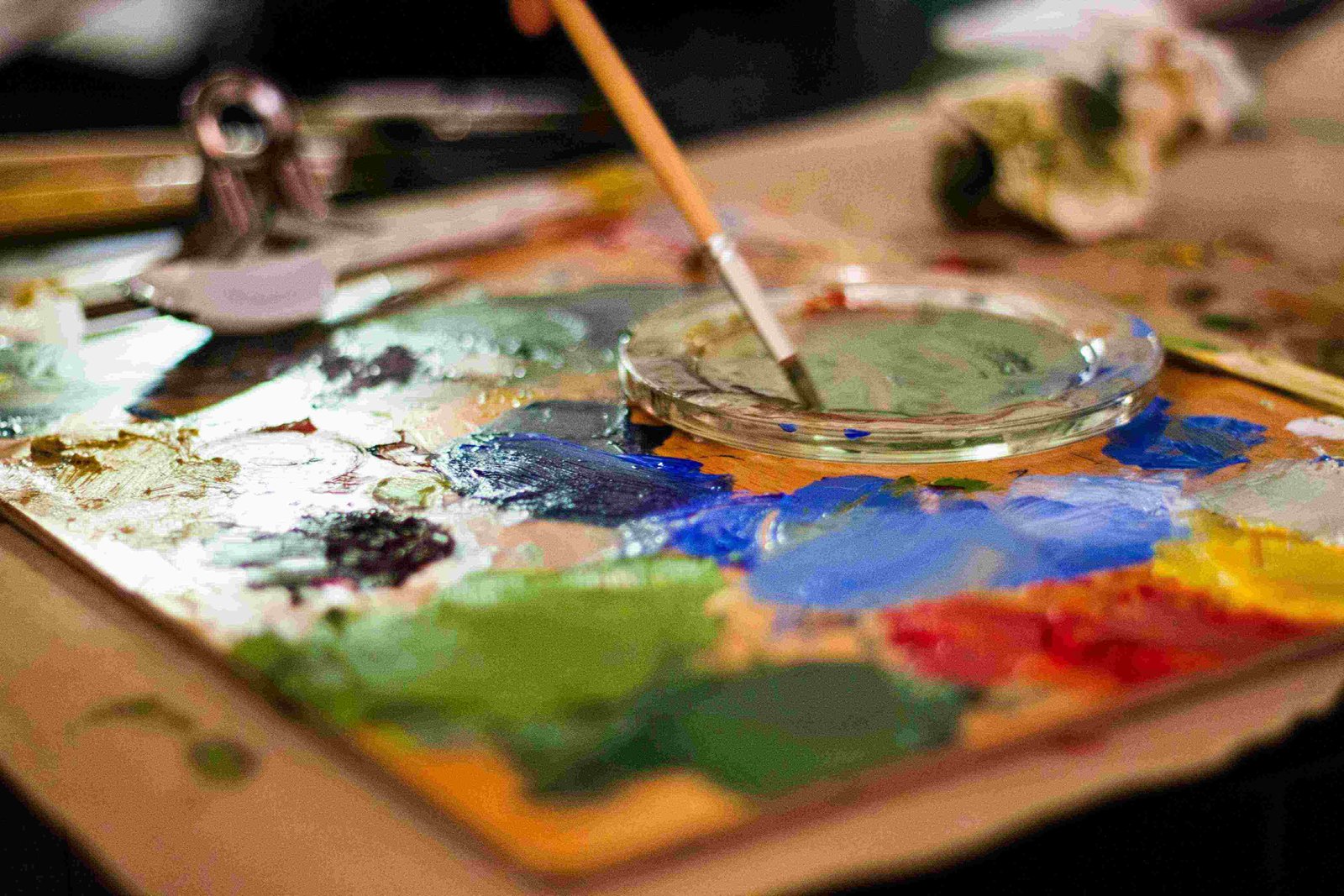Acrylic Paint, Art, Emotion, and Everything In Between
Hello, my name is Sharon, and I’m an artist who especially loves painting with acrylics. I’ve always painted using various techniques, but over the years, I’ve fallen more and more in love with acrylic paint and chose to focus on it. Using acrylics allows me to best express the image I want to create on the canvas, conveying my inner world through its texture, vibrant colors, vitality, and shine, while creating a deep connection with the viewer.
What is Acrylic Paint? Key Advantages
Acrylic paint is used by both professional and amateur artists on a wide variety of surfaces: paper, cardboard, canvas, wood, plastic, metal, glass, stone, and even fabric. It’s affordable and versatile. It can be used thick and glossy, resembling the texture of oil paint, or diluted with water to achieve a delicate, transparent effect similar to watercolor. What’s wonderful about acrylics is that they retain their pigment intensity, do not fade, and remain durable for years.
Although acrylics dry quickly, once you learn how to work with them, this turns from a drawback into an advantage. The fast drying time makes it easy to build up layers and play with colors and textures. There’s something about their shine, soft and breathable texture, and vibrant colors that powerfully convey the artist’s message.
A Bit of Chemistry and History
Acrylic paint is industrially produced by combining two main ingredients: pigment and acrylic resin. The resin is a plastic material made from acrylic acid. Acrylic paint is “tricky” and requires learning how to work with it quickly — it’s easy to dilute with water, but once dried, it becomes water-resistant and cannot be re-dissolved.
In the mid-19th century, when petroleum refining began, acrylic compounds were discovered as byproducts. Acrylic paint was first developed in the 1920s but only became widely used in the 1950s, after an optimal formula was found that ensured lightfastness, safety, and ease of use.
How to Use Acrylic Paint
Acrylic paint is very easy to use. You squeeze it from the tube onto a palette and paint with a brush or palette knife. You can apply it thick and undiluted or mix and dilute it with water. The paint is soft and easy to work with, suitable for many surfaces. Drying time ranges from a few minutes to half an hour, depending on the thickness of the layer.
Important Tip: To preserve the vibrancy and shine of acrylic paintings, I apply a quality water-based varnish over the finished work. This protects the painting from moisture, light, and wear, ensuring it lasts for years, while the varnish even enhances the depth of its colors.
Cleaning brushes and tools is very easy — just wash with soap and water, unlike oil paints that require turpentine and strong-smelling solvents.
The Magic of Acrylics: The Connection Between Power and Emotion in Painting
For me, painting is not just about creating an image but an emotional journey — a visual expression of my skills, feelings, and mental state. Acrylic paints, with their softness, fluidity, vibrant hues, and shine, enable me to experience this journey in the most powerful, free, and intuitive way possible.
I love to paint with thick, rich, glossy acrylics. Their density, shine, and intensity help me express emotional storms, highlight an image I want to emphasize, or convey a message through an entire painting. This intensity can be reflected in colorful, vibrant paintings or in monochrome works and black-and-white compositions.
I enjoy layering colors on canvas, creating textures, and rediscovering how present the paint is each time I create. Acrylics are wonderful and comfortable to use for free-flowing, abstract styles as well as more figurative, realistic, and precise works.
When I paint, my subjective emotions range widely—from joy, adrenaline rush, excitement, and a strong desire to express freely on canvas, to feelings of calm, inner peace, acceptance, and even sadness. Then, I may switch to a different style, more thoughtful and monochrome or black-and-white. Viewers of my work are invited to feel the emotional message conveyed, but equally important are their own feelings and how the colors, textures, style, and subject evoke thought and emotion in them.
- Sharon
Sharon's Art
 Acrylic paints — the secret behind Sharon's artistic expression
Acrylic paints — the secret behind Sharon's artistic expression